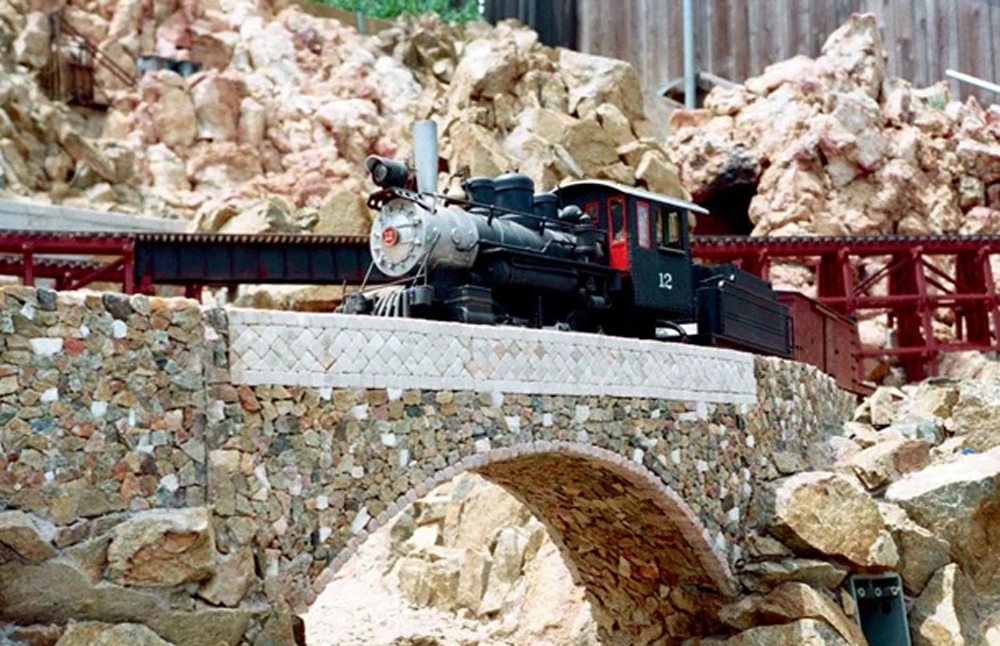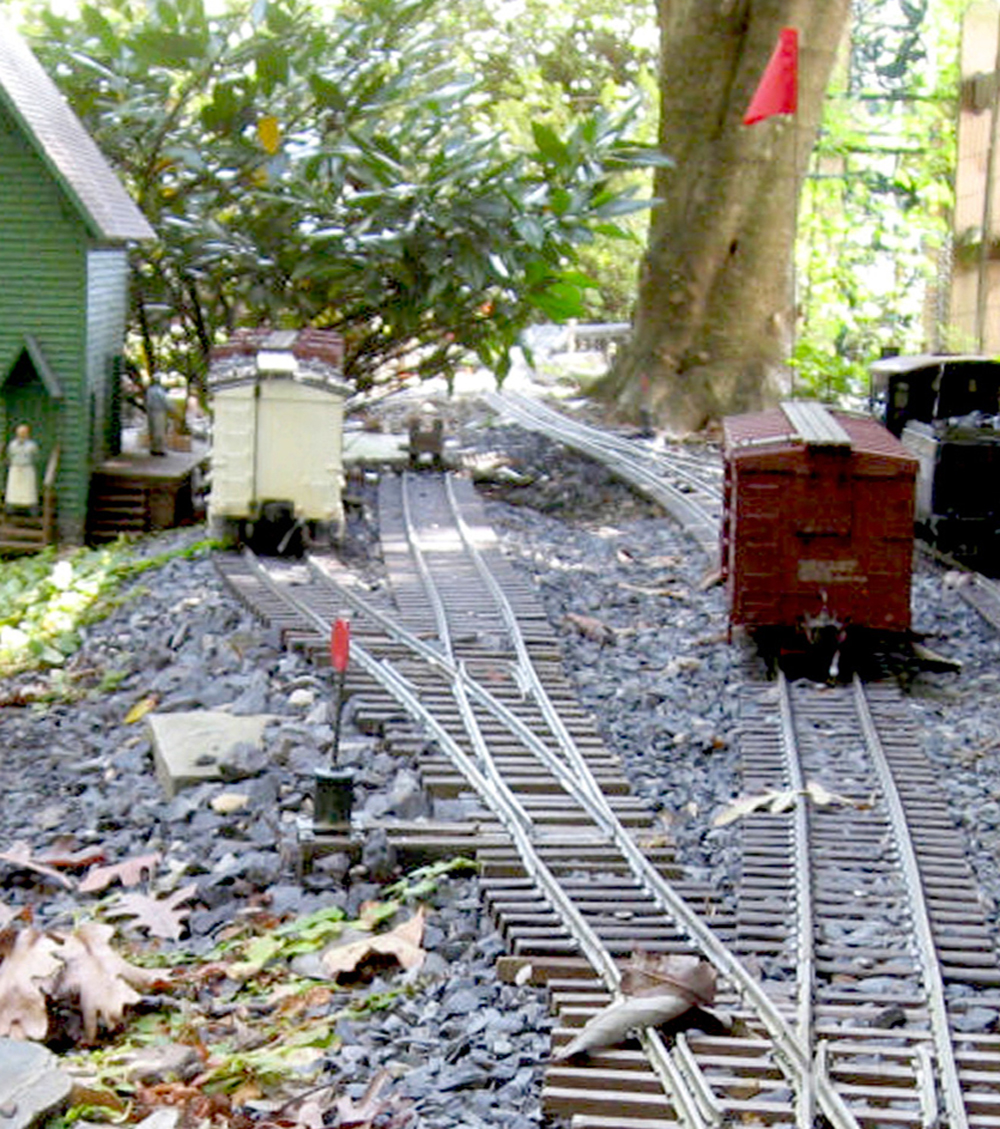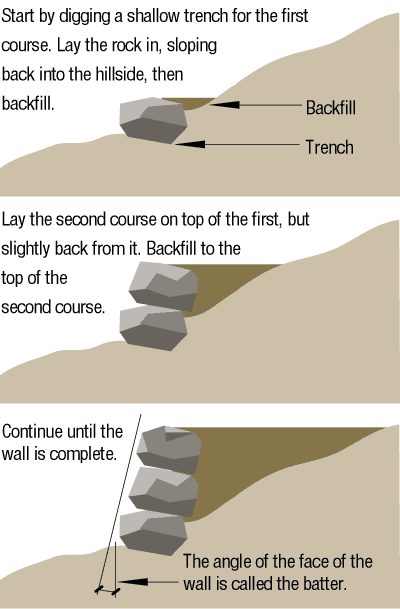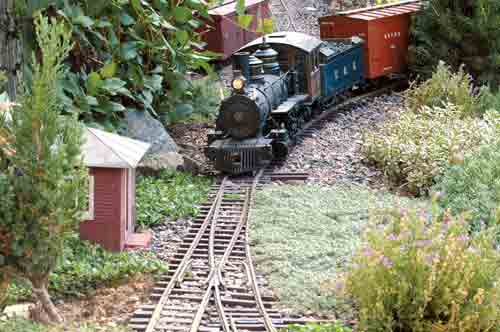Garden railroad electrical/electricity questions and answers
Is it safe to power your trains outdoors? Will I get electrocuted?
It’s completely safe to run track power outdoors! Our trains, like those in the smaller scales, run on low-voltage DC, usually 18-24V. Thus, it is perfectly safe to run your trains outdoors, even in the rain or snow. However, we suggest bringing your equipment indoors (or a garage/storage shed) after operation to protect them from long term weather exposure.Note: the power pack should be kept indoors when it is not being used. and should be connected to the main via a ground-fault circuit interrupter (GFCI), which is available at your hardware store. In the unlikely event of a malfunction within the power pack, the breaker in the GFCI will trip.
Is it safe for children to operate large-scale trains?
Kids of all ages can safely operate a garden railroad with a little guidance and adult supervision. Some garden railways have operation sessions just for children, or may even have a section of the line designed for just for kids! Learn more about involving kids in Nancy Norris’ article.
How do I maintain electrical continuity across rail joiners?
The best way is by soldering jumper wires across the joint. Use braided wire and give it a little loop so it can flex as the track expands and contracts in the sun and seasons.
If you are using brass rail, solder the jumper directly to the rail an inch or so on either side of the joiner. Use a really big soldering iron for this job. If you are using stainless or aluminum rail, tin the ends of the jumper wires and screw them to the rails with stainless-steel screws.
You may choose to use screw-on rail clamps, such as those from Split Jaw Rail Clamps and others, to improve conductivity. These clamps attach to the rails but can be removed or re-positioned later if needed.
What alternatives are there to running electricity through the rails?
Battery power is an attractive option for many hobbyists. This can be anything from a couple of AA cells running a tiny locomotive with a 3V motor and an on/off switch, to gel cells, NiCads (nickel-cadmium) or Li-ion (Lithium-ion) batteries, backfeeding power into an engine via a radio-control system designed specifically for trains. Some hobbyists enjoy running a live-steam locomotive.
There are more obscure forms of power, like clockwork engines. Those won’t be discussed here.
Can I use radio control outdoors?
Radio control (R/C) is not only possible, it is a widely accepted means of controlling large-scale trains. Several manufacturers offer R/C gear designed specifically for use with trains. The way R/C works is relatively simple. You must have a transmitter (Tx) to send the signals and a receiver (Rx) to receive them.
The transmitter is most often a hand-held device. Batteries are carried in the transmitter to give it power. These can be regular alkaline batteries or rechargeables.
The receiver is usually (though not always) carried onboard the train. It requires batteries to run it as well. A second, much larger battery (or batteries) is required to run the motor(s) in the locomotive. Many modern-day R/C sets have a built-in battery-elimination circuit (BEC) that allows you to do away with the receiver’s batteries. The receiver will then run off the same batteries that power the engine.
The receiver translates commands from the transmitter to a circuit through with power to the motor travels. This circuit controls the polarity of the electricity — and hence the direction of travel — and the amount of power delivered to the motor, or the speed of the engine.
Large locomotives may have enough room onboard to carry both batteries and electronics. Smaller locomotives, however, must carry their gear in a car more-or-less permanently coupled to the engine. Some locomotives are equipped so they can easily be converted to radio control.
The locomotive should be disabled so that it cannot receive power from the rails. Remove sliding pickups and wheel brushes. Otherwise, you are not only backfeeding power into the engine, but into the whole track system as well, and other trains on the line might be affected. If you have questions about your locomotive, so check with the manufacturer first.
Sophisticated R/C systems, like Locolinc, can control not only multiple trains independently, but switches, lighting, and just about anything else you can think of as well.
Remote Control Systems of Australia has a unit designed to R/C track-powered trains. This unit is wired into the system between the power pack and the track. Full power is fed from the pack to the receiver, which then varies the voltage and polarity to the track via the hand-held transmitter. This is a useful system for those who wish to have track power, but don’t want to be tied down to the spot where the power pack sits.
Many (but not all) live-steam locomotives can also be radio controlled. Some, like those made by Roundhouse Engineering, come with the radio factory installed. The principle is much the same as with electric engines, but instead of a circuit that varies the power, the receiver is hooked up to a mechanical servo that physically opens and closes the throttle and actuates the valve gear.
What about using DCC in the garden railway?
Yes, this is also possible! Get a free PDF package by signing up for our email list.













